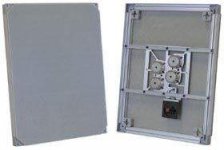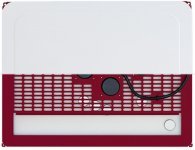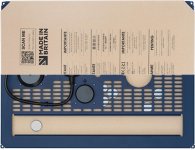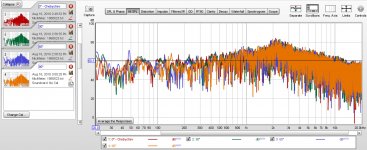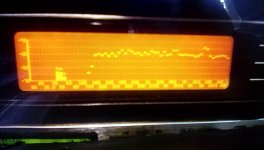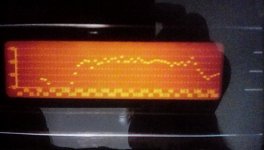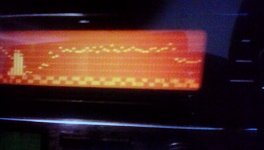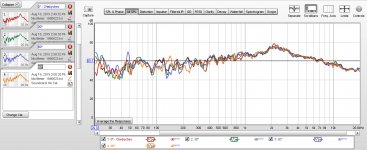Ok, I broke down and bought Loudspeaker and Headphone Handbook by Graham Banks(Saved $50 by getting Kindle Version)
Quoting from Section 4.9 Drive Points
"To give optimal results, the drive should be at a point that couples to all the panel modes, while ensuring de-correlation between panel velocity and drive point....There are a number of locations on the panel that achieve this objective...These mode shapes are converted in contours of nodal lines where displacements are a minimum...
...Regions of no nodal lines represent positions to drive the panel..."
So, this author seems to advocate driving the panel at ANTINODES(where no nodal lines are on node maps. So my original post #1532 question still holds. Why do we, when building DMLs put our drivers on points where most nodes exist?
De-correllation is a math method and a technique to minimize cross talk. I still don't know what this means in light of the above quote which advocates putting drivers at antinodes.
Quoting from Section 4.9 Drive Points
"To give optimal results, the drive should be at a point that couples to all the panel modes, while ensuring de-correlation between panel velocity and drive point....There are a number of locations on the panel that achieve this objective...These mode shapes are converted in contours of nodal lines where displacements are a minimum...
...Regions of no nodal lines represent positions to drive the panel..."
So, this author seems to advocate driving the panel at ANTINODES(where no nodal lines are on node maps. So my original post #1532 question still holds. Why do we, when building DMLs put our drivers on points where most nodes exist?
De-correllation is a math method and a technique to minimize cross talk. I still don't know what this means in light of the above quote which advocates putting drivers at antinodes.
Last edited:
So, this author seems to advocate driving the panel at ANTINODES(where no nodal lines are on node maps. So my original post #1532 question still holds. Why do we, when building DMLs put our drivers on points where most nodes exist?
You're right. Here are photos of Anima panels and one Billionsound panel. Panels advertised as low frequency locate the exciters in the center. The Anima panel (Mobius) that advertises "incredible high frequency dispersion" moves an exciter off to the side.
The panel I'd be most interested in building is the Mobius Soundboard that advertises, "With an incredibly lightweight, stiff and resonant panel material, Mobius speakers are designed to work with the covering material to produce incredible high frequency detail and extension. When paired with a discreet subwoofer, Mobius speakers offer the highest performance characteristics of any invisible loudspeaker."
Attachments
I am still not clear what de correlation is in the DML application
What is "Decorrelation"? | Sweetwater
Isn’t this stuff grand?
What is "Decorrelation"? | Sweetwater
Isn’t this stuff grand?
Bradleypnw :
Nice pics. I read about those. They are installed in the drywall about 1/16” inch shy of flush then plastered over with plaster skim coat. I’d love to hear these installed. They are quite pricey. I am more curious about the AER BBX. Those are priced above my “curiosity” level though.
Thanks again
Nice pics. I read about those. They are installed in the drywall about 1/16” inch shy of flush then plastered over with plaster skim coat. I’d love to hear these installed. They are quite pricey. I am more curious about the AER BBX. Those are priced above my “curiosity” level though.
Thanks again
I am still not clear what de correlation is in the DML application
What is "Decorrelation"? | Sweetwater
Isn’t this stuff grand?
This is what I think it is. First paragraph, chapter 4.9
"For an infinite panel, the location of the drive point is meaningless, but not so for a finite panel. To give optimal results, the drive should be at a point that couples to all the panel modes, and while ensuring de-correlation between panel velocity and drive point."
An infinite panel won't have reflections. It's pebble thrown into a large lake. A finite panel will have reflections. It's a pebble dropped into a square bowl.
Companies that sell infinite panels always advertise their 180 wide soundfield. That's good but it isn't a DML.
A DML has a diffuse soundfield where the direct soundfield does not have a strong correlation to the primary reflections. Sometimes marketed as a disperse soundfield.
In a REW graph, I think that's recognized as an extremely jumpy frequency response. I suspect that if we could isolate the initial impulse of the drive point (or measure an infinite panel) it would look like a normal frequency response graph. I think that's what is meant by de-correlated but I'm not sure.
It's possible that the rise in my FR graph just over 2K is either a correlation between the initial impulse and the modes or it is a standing wave, or those two terms are different ways of saying the same thing.
Attachments
You're right. Here are photos of Anima panels and one Billionsound panel. Panels advertised as low frequency locate the exciters in the center. The Anima panel (Mobius) that advertises "incredible high frequency dispersion" moves an exciter off to the side.
The panel I'd be most interested in building is the Mobius Soundboard that advertises, "With an incredibly lightweight, stiff and resonant panel material, Mobius speakers are designed to work with the covering material to produce incredible high frequency detail and extension. When paired with a discreet subwoofer, Mobius speakers offer the highest performance characteristics of any invisible loudspeaker."
What I want to know is have you heard those speakers in person?
A lot of speaker manufacturers will claim there product as the best. What other type of invisible loudspeaker did they compare there product to?
Second you keep on calling them Anima but it seems like they are called "AMINA". There are videos of Amina invisible speakers on youtube but most wont find them if spelled Anima. LOL Amina uses aluminum honeycomb that looks to be 1/4 or even 1/8 inch thick.
YouTube
You should audition the mobius sound board before you plan to duplicate it as you could be very disappointed.
This is what I think it is. First paragraph, chapter 4.9
An infinite panel won't have reflections. It's pebble thrown into a large lake. A finite panel will have reflections. It's a pebble dropped into a square bowl.
Companies that sell infinite panels always advertise their 180 wide soundfield. That's good but it isn't a DML.
A DML has a diffuse soundfield where the direct soundfield does not have a strong correlation to the primary reflections. Sometimes marketed as a disperse soundfield.
In a REW graph, I think that's recognized as an extremely jumpy frequency response. I suspect that if we could isolate the initial impulse of the drive point (or measure an infinite panel) it would look like a normal frequency response graph. I think that's what is meant by de-correlated but I'm not sure.
It's possible that the rise in my FR graph just over 2K is either a correlation between the initial impulse and the modes or it is a standing wave, or those two terms are different ways of saying the same thing.
It would be helpful to plot these at 1/12 octave filtering. Otherwise the hash just overwhelms and we can’t see the comparison.
Why does Katz say that, what's his reasoning?
For example, I think you should have a diffuse soundfield above Schroeder because you're dealing with ray acoustics in a small room. Below Schroeder I think you should have separate low frequency sources so you can implement a small room mode equalization strategy (Harman/Welti, Geddes, near field, ?) I'd argue traditional subs would be a good low frequency source because they are so well understood and easy to build. On the other hand, low frequency panels might be great too.
This is what Katz wrote in his "LAYERD SOUND" article. LAYEREDSOUND
Natural sound manifests two types of sound-waves: binaurally correlated and binaurally de-correlated waves. Binaurally correlated sound waves are highly cohesive, and among other things, permit us to determine where a sound source is located.Binaurally de-correlated sound waves are highly incoherent, and among other things, permit us to estimate our distance from the source, or the nature and size of an acoustic space. The main problem with loudspeakers is their inability to propagate sound with both wave-types. This is an engineered limitation inherent in the mechanical nature of the devices themselves. Conventional cone loudspeakers propagate longitudinal waves. Longitudinal waves are highlycohesive and binaurally correlated. Resonating DML type loudspeakers are transverse wave loudspeakers. Transverse sound waves are highly incoherent and binaurally decorrelated. It is simply impossible to propagate transverse waves with a conventional loudspeaker and conversely, it is impossible to propagate longitudinal waves with a resonating panel loudspeaker. No amount of DSP, loudspeaker placement, room treatment or other adjustments will change this simple fact. To reproduce natural sound, both types of loudspeakers are required.
That makes sense. According to the article reference I posted above from Sweetwater, monophonic audio was de correlated to create an illusion of stereo and stereo was de correlated for quadraphonic sound. Similar sounds are de correlated by separating them to create an illusion.
The combination of my DML’s and my open baffle Altecs create a very realistic soundstage probably by the mechanism you describe( DML+ dynamic longitudinal waves)
Shelly katz of podium fame is now saying that you should have both direct radiated sound....
Steve
Shelley Katz was the marketing guy, the mouth. He is not an expert on DMLs.
Shelley Katz was the marketing guy, the mouth. He is not an expert on DMLs.
Judge for yourselves. 6moons audio reviews: Podium Sound Model 1
IMO Shelly Katz seems to be smarter then the average bear. lol
Anyone here ever try the FPS flat drivers? They call it plane wave technology and are said to be dipoles. There is a article that combined traditional cone drivers with the FPS flat drivers. Sort of like layered sound by Shelly katz. Those speakers had a favorable review and designed by the famous Albert Von Schweikert. In the past I was thinking about trying out some of them FPS drivers on clearance but never got around to pulling the trigger. If they go on sale I might give them a shot.
Here is the article. > StereoTimes - FPS Model F1 Flat-Panel Hybrid Speaker System
Here is the article. > StereoTimes - FPS Model F1 Flat-Panel Hybrid Speaker System
Judge for yourselves. 6moons audio reviews: Podium Sound Model 1
IMO Shelly Katz seems to be smarter then the average bear. lol
Dmlbes.
Thanks for that post,I can't believe it was 2007 ,I remember being at the 2006 audio show and being very excited at listening to the podium demo.
I don't remember the interview being so detailed and that the layered sound idea came before the podiums,should have paid more attention!
To him sound is everything ,the problem with nxt patents and the like,is that the sound doesn't seem to get a mention,I do wonder if it's more about quantity than quality.
Anyway here are some pics I hope.
Yes hooray.
The first from left is a very old 170cmx60cm x25mm eps panel 70 grade I think ,I sanded down the panel but never got round to re-coting the sureface ,large panels are hard work! And messy .
Distance is 1ft approx,in front of exciter.
Second pic is the same panel but an inch of two to the left of exciter,also 1ft.
Third pic is same panel but now at least 10ft back into room near seating position,I have rolled off the response below 150hz on all pics to simplify the view ,sorry about quality of the pics as I had to take photos of my phone pictures ,too large for this site!
Steve
Attachments
If you guys have a microphone, get the free REW software and collect much easier to read spectrum data vs little screens on your rack mount equipment. It’s better than nothing but would be nice to see vertical axis in 5dB major ticks and frequency labeled from 20Hz to 20kHz in log scale.
I can’t really make out the units on either axis here. Maybe -45dB to -50dB vertical and horizontal starts around 150Hz and goes up to?
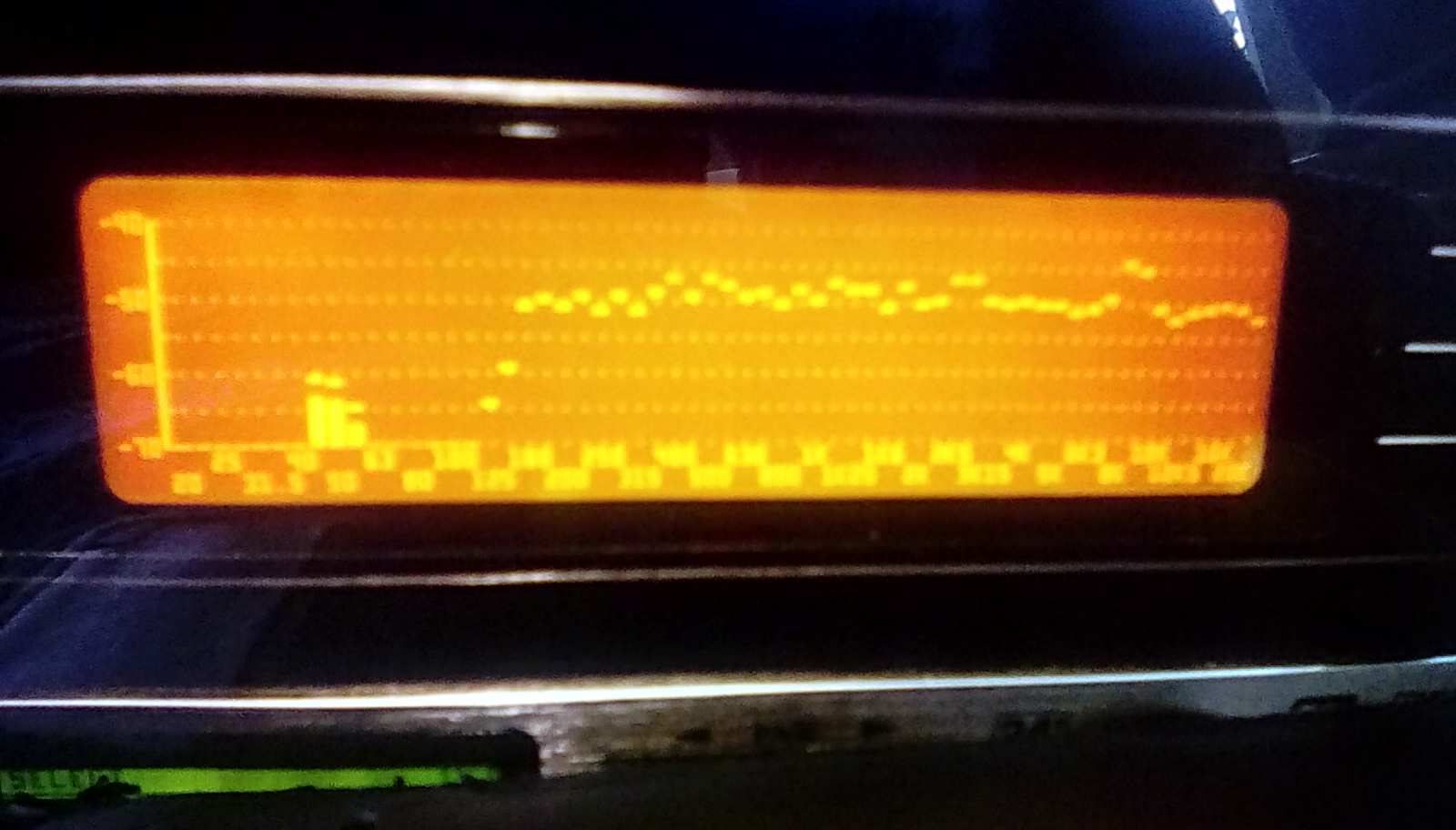
Vs what BSP1304 posted earlier:
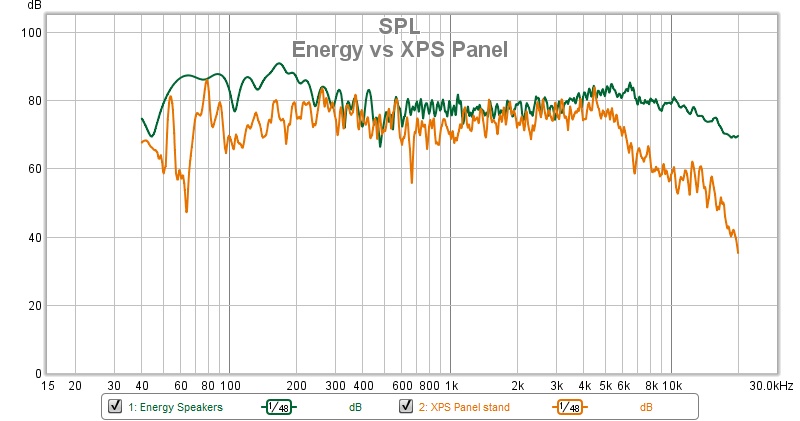
I can’t really make out the units on either axis here. Maybe -45dB to -50dB vertical and horizontal starts around 150Hz and goes up to?
Vs what BSP1304 posted earlier:
Last edited:
It would be helpful to plot these at 1/12 octave filtering. Otherwise the hash just overwhelms and we can’t see the comparison.
I used this 1/24 to equalize the DSP, which does work. However, I think it's the least interesting graph in the context of a DML. Theoretically, I want to build a DML that has a solid hash all the way down to Shroeder.
Attachments
Bradleypnw :
Nice pics. I read about those. They are installed in the drywall about 1/16” inch shy of flush then plastered over with plaster skim coat. I’d love to hear these installed. They are quite pricey. I am more curious about the AER BBX. Those are priced above my “curiosity” level though.
Thanks again
KoAP pointed those out earlier. At $22K you'd have the breathing room to build your own.
Judge for yourselves. 6moons audio reviews: Podium Sound Model 1
IMO Shelly Katz seems to be smarter then the average bear. lol
Does Podium Sound Ltd. use the NXT patent?
No, not at all. Interestingly, that question was also asked of several individuals who were or are still involved with the NXT company and they concur - the Podium technology is completely different in many ways. Where the NXT DML (Distributed Mode Loudspeaker) uses maths to predict and design a given panel, the Podium technology uses no maths at all. Where the DML is designed to maximize the distribution of modes, especially in the bass frequencies through analysis and prediction, the Podium is 'tuned' empirically like an acoustic instrument.
It sounds like NXT laughed at this speaker. On the other hand, this is how DIYers have to build a DML. Which isn't a total disaster because we have access to inexpensive DSP.
Have you guys ever heard a NXT panel? I have 4 of them and they don’t hold a candle to my home brew panels. They sound lifeless. I much prefer my Foamular 150/ Dayton thruster panels. Even when biamping to my Altec 15 “ subwoofers and doing A/B comparisons this holds true.
Have you guys ever heard a NXT panel? I have 4 of them and they don’t hold a candle to my home brew panels. They sound lifeless. I much prefer my Foamular 150/ Dayton thruster panels. Even when biamping to my Altec 15 “ subwoofers and doing A/B comparisons this holds true.
Do you happen to have a measurement mic? I'd love to see how an NXT panel measures.
- Home
- Loudspeakers
- Full Range
- A Study of DMLs as a Full Range Speaker
